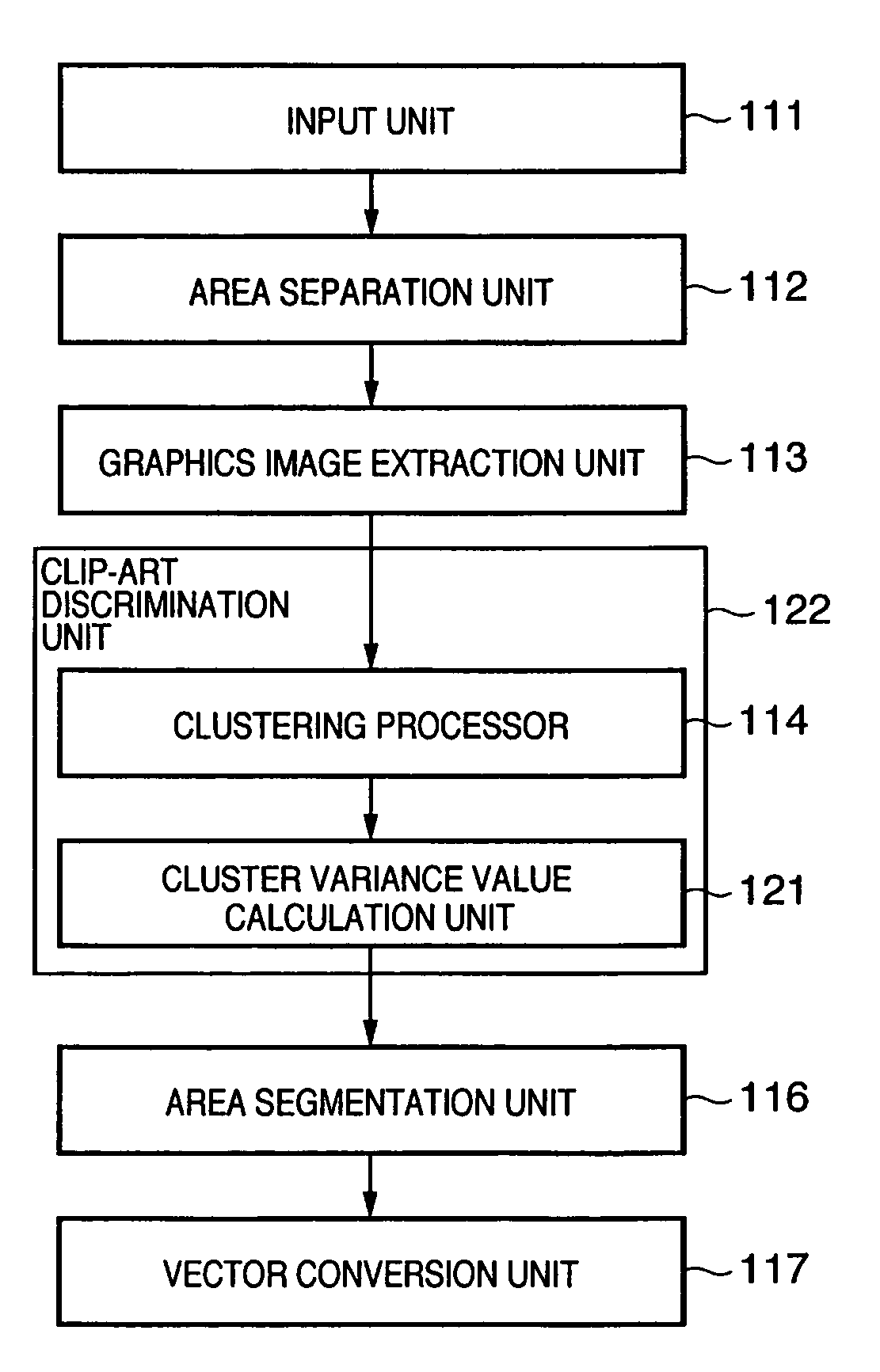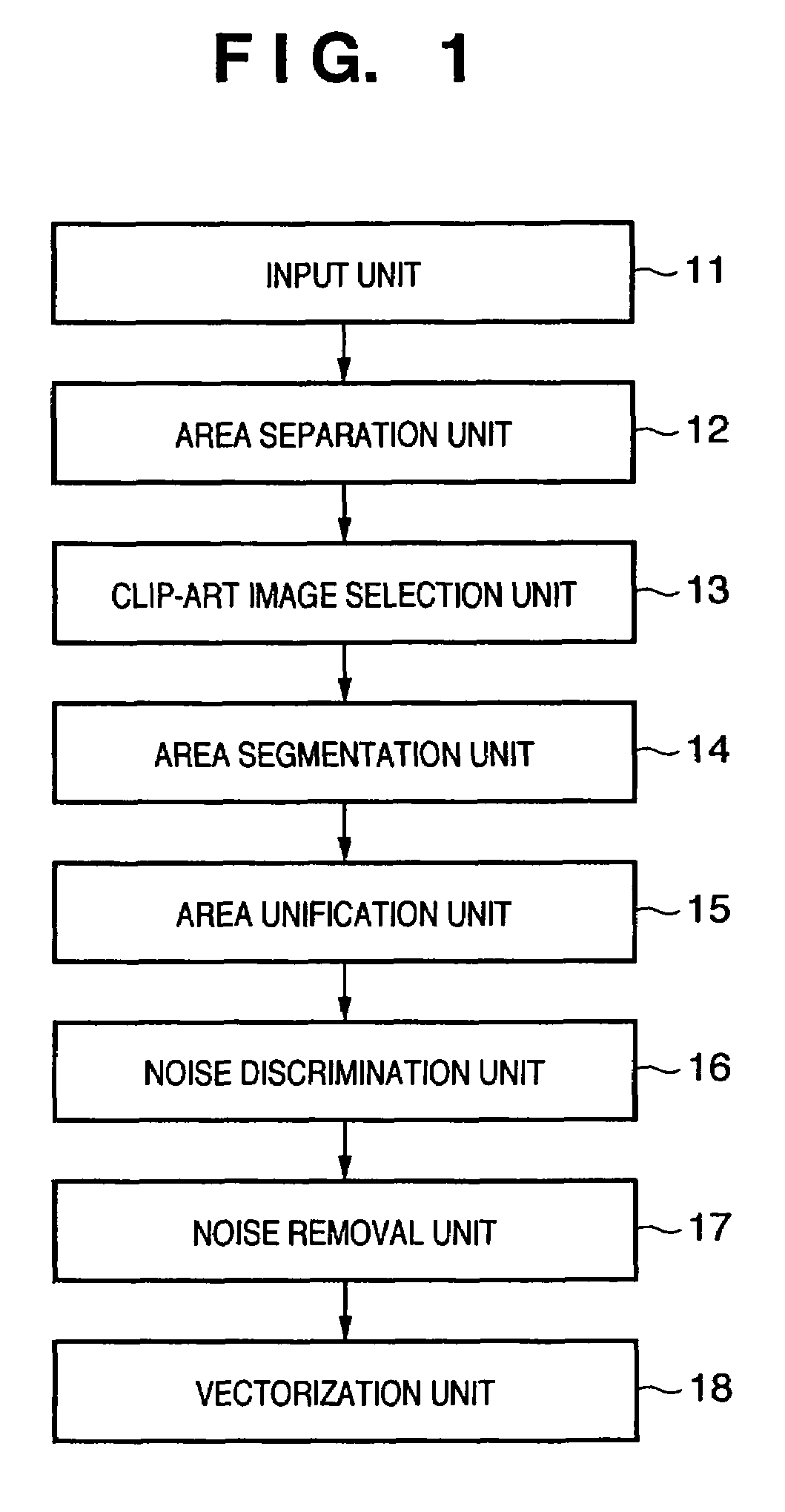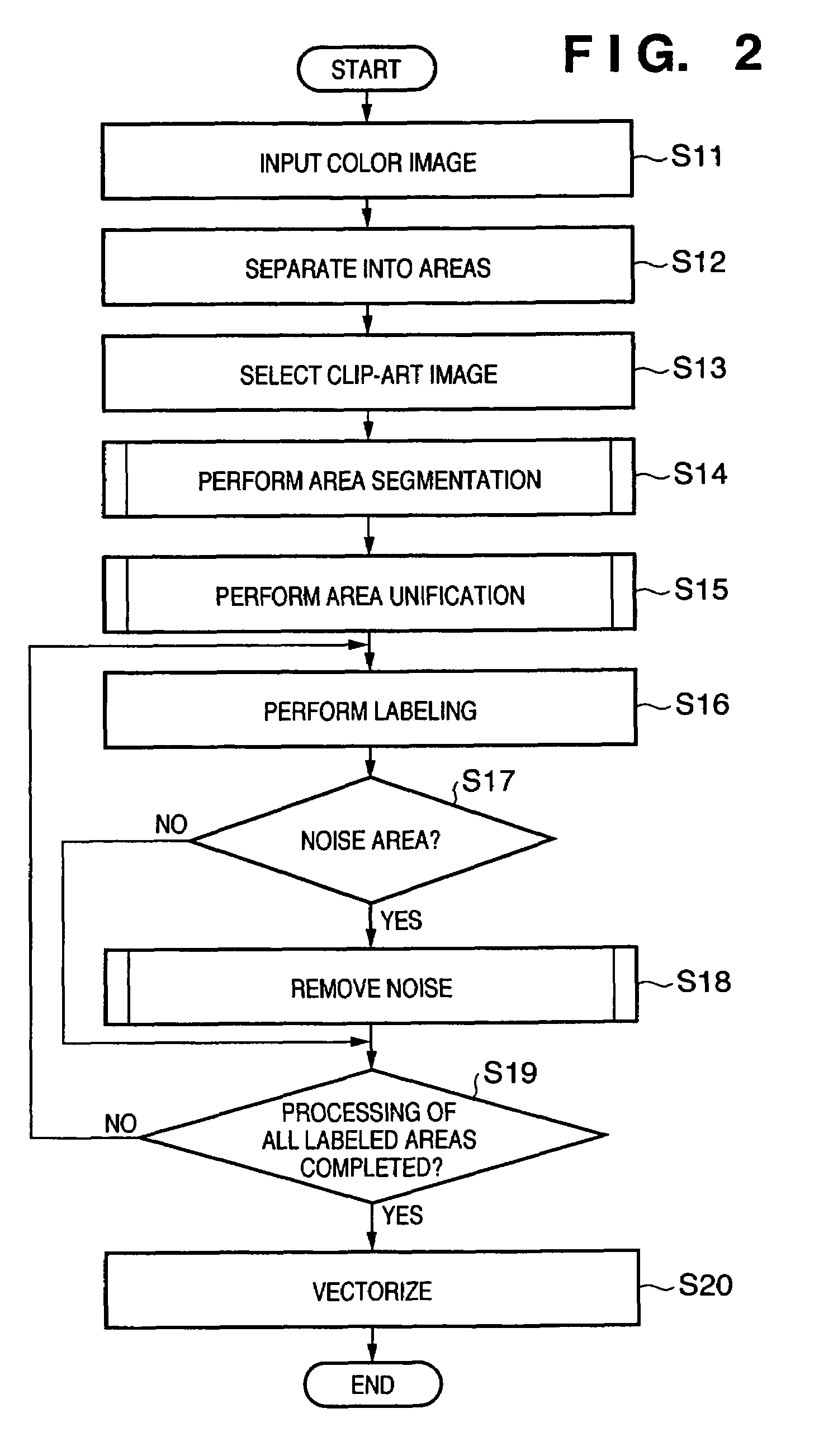Image processing method and apparatus
a technology of image processing and image quality, applied in the field of image processing methods and apparatuses, can solve the problems of reducing the amount of data, preventing the decline of image quality, and no longer limited documents that can undergo such conversion to electronic form
- Summary
- Abstract
- Description
- Claims
- Application Information
AI Technical Summary
Benefits of technology
Problems solved by technology
Method used
Image
Examples
first embodiment
[0048][Structure]
[0049]FIG. 1 is a block diagram illustrating the structure of an image processing apparatus having a function for executing vectorization processing based upon area segmentation in a first embodiment of the present invention. In FIG. 1, an input unit 11 inputs a color document image by scanning in a paper document or the like. An area separation unit 12 separates the color document image, which has been input by the input unit 11, into areas of a plurality of types that include a photographic area. A clip-art image selection unit 13 selects a clip-art image from the areas separated from the input image by the processing executed using the area separation unit 12.
[0050]An area segmentation unit 14 segments the clip-art image, which has been selected by the clip-art image selection unit 13, into a plurality of areas based upon the color features of the clip-art image. An area unification unit 15 unifies similar areas among the plurality of areas obtained by segmentati...
second embodiment
[0092]A second embodiment of the present invention will now be described.
[0093]The first embodiment set forth above illustrates an example in which it is determined whether an area is a noise area depending upon the size of a labeled area (a small area) after labeling processing. In a second embodiment, which is intended to prevent the removal of valuable information in an image, reference will be had to FIG. 9 to describe an example in which after a noise area has been discriminated based upon the size of a labeled area, further use is made of other information to determine whether the area is a noise area. It should be noted that the structure of the image processing apparatus having the function for executing vectorization processing based upon area segmentation in the second embodiment is similar to that of the image processing apparatus according to the first embodiment.
[0094]FIG. 9 is a flowchart useful in describing the details of vectorization processing that is based upon a...
third embodiment
[0099]FIG. 11 is a block diagram illustrating the structure of an image processing apparatus for executing vectorization processing based upon area segmentation according to a third embodiment of the present invention. As shown in FIG. 11, the apparatus includes a input unit 111 for inputting a document image; an area separation unit 112 for separating the document image into areas such as text and photographic areas; a graphics image extraction unit 113 for extracting a portion having a graphics attribute from the results of area segmentation; a clustering processor 114 for subjecting graphics to clustering processing in order to discriminate clip-art images (illustrated images); and a cluster-count counting unit 115 for counting the number of clusters in the results of clustering in order to discriminate clip-art images. It should be noted that the clustering processor 114 and cluster-count counting unit 115 construct a clip-art discrimination unit 118. The apparatus further inclu...
PUM
 Login to View More
Login to View More Abstract
Description
Claims
Application Information
 Login to View More
Login to View More - R&D
- Intellectual Property
- Life Sciences
- Materials
- Tech Scout
- Unparalleled Data Quality
- Higher Quality Content
- 60% Fewer Hallucinations
Browse by: Latest US Patents, China's latest patents, Technical Efficacy Thesaurus, Application Domain, Technology Topic, Popular Technical Reports.
© 2025 PatSnap. All rights reserved.Legal|Privacy policy|Modern Slavery Act Transparency Statement|Sitemap|About US| Contact US: help@patsnap.com



